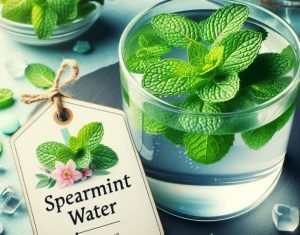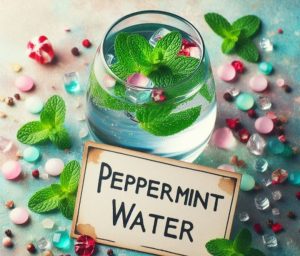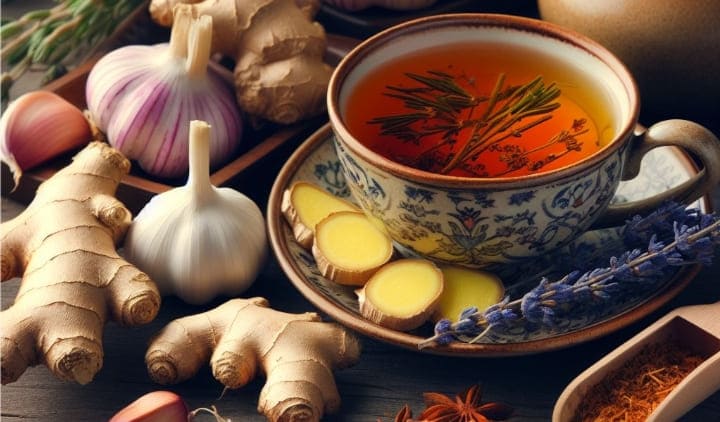
Honey is a natural ingredient that has been used for centuries for its various health and skincare benefits. When incorporated into a bath, honey can provide numerous advantages for the skin, body, and overall well-being.
In this article, we will explore the seven key benefits of honey baths, diving deep into their explanations, and providing optimization tips to maximize their potential and benefits.
What Is Honey Bath?
A honey bath is a luxurious and soothing bath experience where honey is added to the bathwater for its moisturizing and nourishing properties. Typically, a few tablespoons of honey are mixed into warm bathwater, allowing the honey to dissolve and disperse throughout the bath.
Some people also add other ingredients to their honey baths, such as essential oils or milk, to enhance the experience and further nourish the skin. Honey baths are often enjoyed for their relaxing and rejuvenating effects on both the body and mind.
Don’t Miss:
- Benefits of Honey Over Sugar
- Health Benefits Of Yemeni Honey
- Health Benefits of Honey Chai Turmeric Tea
- Benefits of Honey While Sick
- Benefits Of Honey and Himalayan Salt
- The Benefits of Honey for Women’s Weight Loss
- Benefits of Taking Honey Before Running
- Benefits of Honey During a Cold and How to Maximize Their Effectiveness
Benefits of a Honey Bath
For centuries, honey has been revered for its culinary and medicinal properties. Beyond its delicious taste and wound-healing abilities, honey offers a unique and potentially beneficial addition to bath time – the honey bath. Soaking in a warm bath infused with honey goes beyond pure indulgence; it offer a range of potential benefits for your skin, body, and mind. Let’s delve deeper into the science behind the benefits of a honey bath.
1. Potential for Soothing Dry, Irritated Skin
Honey is a natural humectant, meaning it attracts and retains moisture. This property can be particularly beneficial for individuals with dry, itchy, or irritated skin conditions like eczema or psoriasis.
When dissolved in bathwater, honey can create a thin, hydrating layer on the skin’s surface, helping to lock in moisture and alleviate dryness.
Additionally, honey’s mild anti-inflammatory properties might also contribute to soothing irritation and promoting skin healing.
Optimization Tip: To maximize the moisturizing benefits of a honey bath, consider adding a carrier oil like almond oil, coconut oil, or jojoba oil to the bathwater. Carrier oils help disperse the honey in the water and further enhance its moisturizing properties. Additionally, avoid using hot water for your bath, as it can strip away natural oils from your skin. Opt for lukewarm water to maintain your skin’s natural moisture barrier.
2. Potential for Wound Healing and Scar Reduction
Honey has a long history of use in wound healing due to its antimicrobial and anti-inflammatory properties.
Manuka honey, a specific type of honey produced in New Zealand, is particularly well-studied for its wound-healing potential.
While research on the effectiveness of honey baths for wound healing is limited, the topical application of honey might offer some benefits.
Soaking in a honey bath might create a soothing environment for minor wounds and potentially promote healing through its anti-inflammatory and antimicrobial properties.
Important Note: Honey baths are not a substitute for proper wound care. Consult your doctor for evaluation and treatment of any wounds or skin conditions.
3. Potential for Relaxation and Stress Relief
Honey baths can be a delightful way to unwind and de-stress after a long day. The warm water itself promotes relaxation by increasing blood flow and muscle relaxation.
Additionally, the sweet aroma of honey can have a calming effect on the nervous system.
The act of taking a relaxing bath allows you to disconnect from daily stressors and focus on self-care, further contributing to honey bath stress relief benefits.
Optimization Tip: To create a truly immersive and relaxing experience, consider setting the mood with aromatherapy. Lavender essential oil or chamomile essential oil are well-known for their calming properties. Add a few drops of your chosen essential oil to your bathwater (diluted in a carrier oil first) to create a spa-like atmosphere. Additionally, create a relaxing ambiance by dimming the lights, playing calming music, or lighting candles.
4. Potential for Improved Sleep Quality
Relaxation achieved through a honey bath might indirectly contribute to improved sleep quality.
As mentioned earlier, honey baths can promote relaxation and stress relief, both of which are crucial for falling asleep and maintaining quality sleep.
Additionally, the warm water from the bath can help raise your body temperature slightly.
As your body temperature cools down after the bath, it can signal sleepiness and promote a more restful night’s sleep.
Optimization Tip: To maximize the potential sleep benefits of a honey bath, schedule your bath routine at least an hour or two before bedtime. This allows your body temperature to regulate naturally after the bath, promoting sleepiness closer to bedtime. Additionally, establish a relaxing bedtime routine that includes activities like reading, taking a warm bath, and avoiding screens for at least an hour before sleep.
Important Note: While honey baths might offer some relaxation benefits that could indirectly improve sleep, consult your doctor if you experience chronic sleep problems. There might be underlying health conditions requiring medical attention.
5. Potential for Antioxidant Benefits
Honey is a natural source of antioxidants, including phenolic compounds and enzymes like glucose oxidase.
While most of the research on honey’s antioxidant benefits focuses on its consumption, soaking in a honey bath might offer some potential benefits as well.
Antioxidants help combat free radical damage in the body, which is linked to various health concerns and premature aging.
While the extent of these benefits through topical application needs further investigation, honey baths might offer some antioxidant support for the skin.
Important Note: The research on the systemic absorption of antioxidants from honey baths is limited. Most of the benefits likely occur topically on the skin’s surface
6. Gentle Cleansing and Exfoliation
Honey has natural cleansing properties due to its slightly acidic nature and low sugar content. Soaking in a honey bath might offer a gentle cleansing effect, removing dirt and impurities from the skin’s surface.
Additionally, some research suggests that honey might possess mild exfoliating properties. However, unlike harsh chemical exfoliants, honey is unlikely to irritate even sensitive skin.
Optimization Tip: To enhance the cleansing and exfoliating benefits of a honey bath, consider adding ingredients like oatmeal or finely ground almonds to the bathwater. Oatmeal has well-known gentle exfoliating properties, while almonds offer a slightly more abrasive texture for deeper exfoliation. However, if you have sensitive skin, opt for oatmeal or a gentler exfoliating option.
Important Note: Honey baths are not a substitute for regular cleansing with a gentle cleanser. Consult a dermatologist if you have concerns about exfoliation or cleansing routines for your specific skin type.
7. Potential for a Luxurious and Sensory Experience
Beyond the potential health benefits, honey baths offer a luxurious and multi-sensory experience. The warm water, the sweet aroma of honey, and the smooth, silky feeling on your skin can create a truly pampering experience. This self-care ritual can contribute to feelings of well-being and overall relaxation.
Optimization Tip: To elevate your honey bath experience to a whole new level, consider incorporating additional elements. Light some scented candles, play calming music, and prepare a cup of herbal tea to enjoy after your bath. You can also create a homemade honey bath soak by combining raw honey with carrier oils like almond oil and essential oils like lavender for a truly customized and luxurious experience.
Honey baths are also natural, chemical-free, customizable, affordable, and act as an all-in-one solution for cleansing, moisturizing, exfoliating, and protecting the skin
Creating a Relaxing Honey Bath at Home: A Step-by-Step Guide
Honey baths are a luxurious and potentially beneficial way to unwind and pamper yourself. Here’s a step-by-step guide to creating your own honey bath at home:
Ingredients:
- ½ cup to 1 cup of raw, unpasteurized honey (depending on your bathtub size and preference)
- Warm bathwater
- Optional additions:
- Carrier oil (like almond oil, coconut oil, or jojoba oil) – helps disperse honey and enhance moisturizing benefits
- Essential oils (like lavender or chamomile) – promotes relaxation and creates a spa-like atmosphere
- Oatmeal or finely ground almonds – offers gentle exfoliation
- Dried flowers (like rose petals or lavender) – adds a touch of luxury and fragrance (avoid if you have allergies)
Instructions:
- Prepare the Bath: Draw a warm bath, ensuring a comfortable temperature that won’t irritate your skin.
- Honey Magic: While the bathwater is running, add your desired amount of honey. Stir well to help dissolve the honey in the water.
- Enhance the Experience (Optional): If using carrier oils or essential oils, dilute them in a small amount of warm water before adding them to the bathwater. This helps prevent them from concentrating on the surface. Add oatmeal, ground almonds, or dried flowers if desired.
- Relax and Soak: Once everything is well-mixed, step into your honey bath and soak for 15-20 minutes. Allow yourself to relax and unwind, enjoying the warm water, soothing aroma, and potential skin benefits of the honey.
- Rinse and Moisturize: After your bath, rinse off with lukewarm water to remove any honey residue. Pat your skin dry and apply a moisturizer to lock in hydration, especially if you have dry skin.
Honey Varieties for your Honey Bath
While any raw, unpasteurized honey can be used for a honey bath, some varieties might offer additional benefits:
- Manuka Honey: This honey, native to New Zealand, is known for its potent antibacterial properties. While research on topical benefits is limited, it might offer additional wound-healing support in a honey bath.
- Lavender Honey: Infused with the calming aroma of lavender flowers, this honey can further enhance the relaxation benefits of your honey bath.
- Local Raw Honey: Supporting local beekeepers and using honey harvested from your region can ensure a fresh, high-quality product for your bath.
Important Considerations for Honey Baths
While honey baths offer a range of potential benefits, it’s crucial to consider some important factors before indulging in this relaxing ritual:
- Honey Allergies: If you have a known allergy to honey, avoid honey baths altogether. Even topical application can trigger allergic reactions in some individuals. Conduct a patch test on a small area of your inner arm with diluted honey solution before taking a full honey bath.
- Skin Conditions: Consult your dermatologist before taking a honey bath if you have any pre-existing skin conditions like eczema or psoriasis. While honey might offer some soothing benefits, it’s essential to ensure it won’t irritate your specific skin condition.
- Honey Quality: Opt for raw, unpasteurized honey for your honey bath. Pasteurization can destroy some of honey’s beneficial properties. Look for local honey sources or reputable brands that offer raw honey.
- Quantity of Honey: The amount of honey you add to your bathwater depends on your preference and the size of your bathtub. A good starting point is ½ cup to 1 cup of honey for a standard bathtub.
Also Checkout:
- Benefits of Honey for Diabetics Everyone Should Know
- Benefits of Honey for Stomach (Gut Health) and How to Maximize Their Effectiveness
- Benefits of Honey to the Brain
- Health Benefits of Adding Honey to Tea
- Health Benefits Of Honey For Kids
- Benefits of Honey Lavender Tea
- Benefits of Honey Mustard and Recipe
- Honey Sticks: Benefits, Types, Recipe and Uses
- Health Benefits of Honey Wheat Bread And Recipes
- Honeybush Tea: Benefits and Preparation
- Benefits of Eating Honey During Pregnancy
Conclusion
Honey baths offer a delightful and potentially beneficial addition to your self-care routine. From potentially soothing dry skin and promoting relaxation to creating a luxurious sensory experience, honey baths can contribute to your overall well-being.
Remember, honey baths are not a magic bullet for any health condition. However, incorporating them alongside a healthy lifestyle and proper skincare practices can elevate your self-care routine and leave you feeling refreshed and rejuvenated.
References:
[1] https://beebaltic.com/blogs/bee-baltic/the-benefits-of-bathing-with-honey-a-sweet-treat-for-your-skin
[2] https://iowaybeefarm.com/ioway-bee-farm/list-of-honey-baths-and-its-benefits-to-your-skin/
[3] https://www.wikihow.com/Use-Honey-in-the-Bath
[4] https://beegood.co.uk/blog/bathing-with-honey-for-wellbeing/
[5] https://www.bustle.com/p/6-ingredients-to-add-to-your-bath-to-benefit-your-skin-body-38365







































